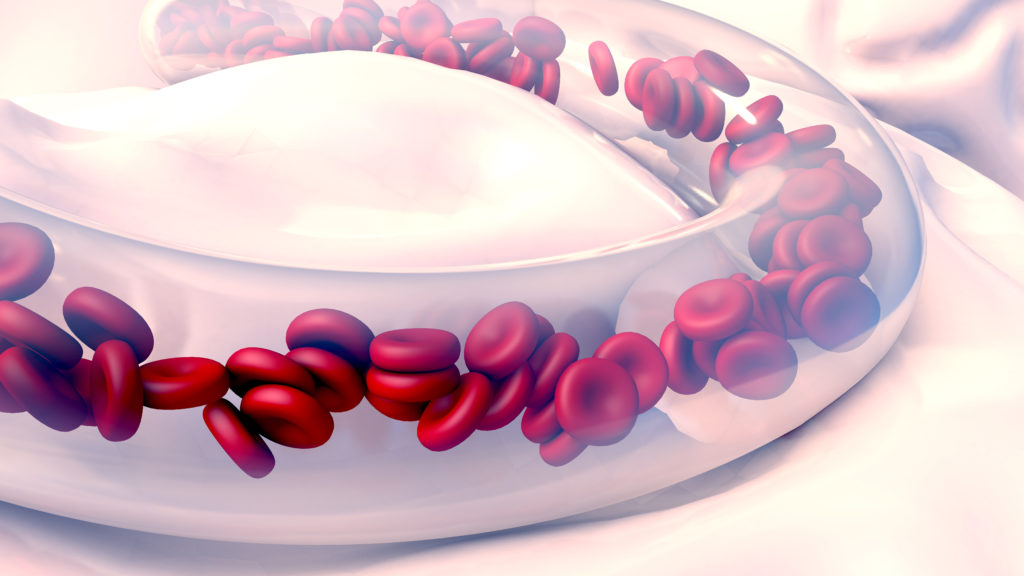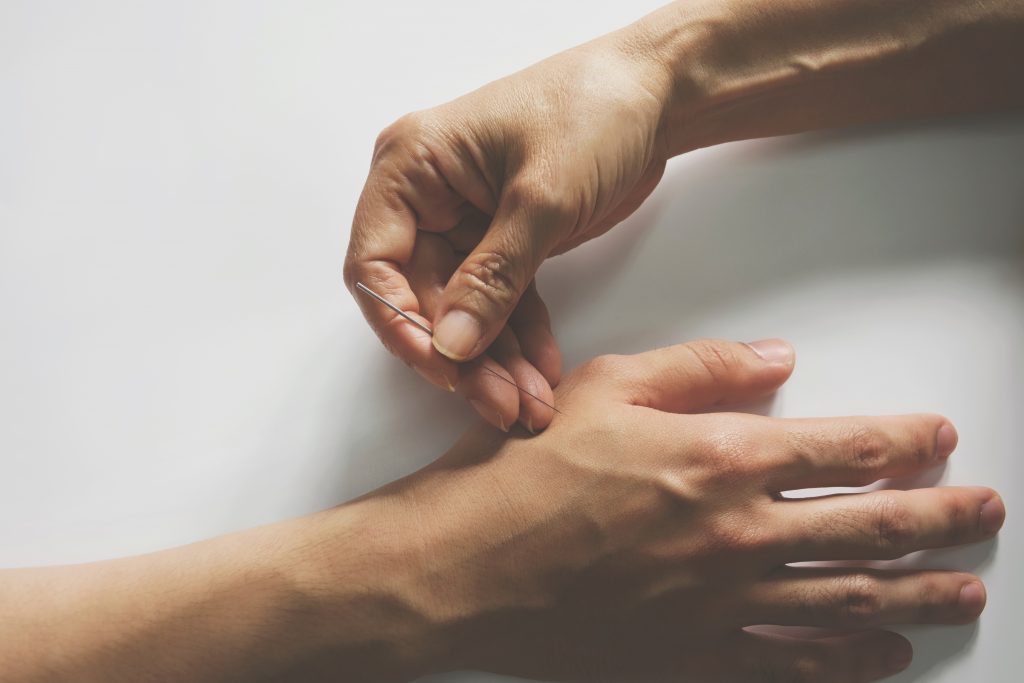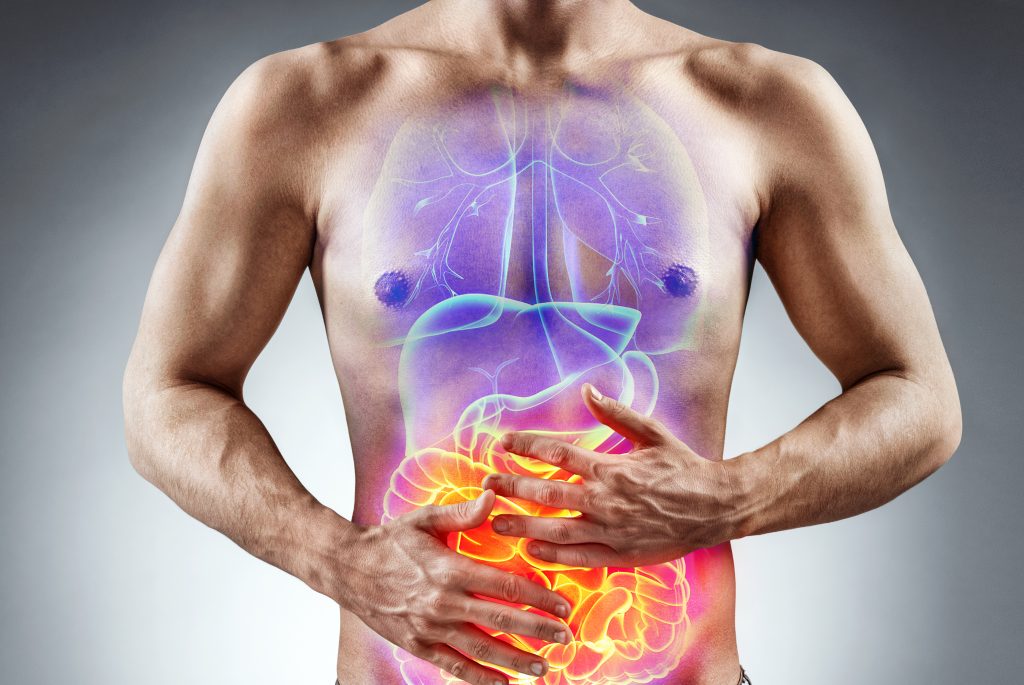Fibromyalgia is a poorly understood and often under-diagnosed medical condition. In fact, it’s estimated that up to 5% of people suffer from fibromyalgia.
In this article, I share what’s known about fibromyalgia and it’s moving parts.
Secondly, I explain two underlying causes I commonly see in my clinic and how I treat them.
At the end of this article, I talk about four lifestyle steps that can benefit people with fibromyalgia.
What is Fibromyalgia?
Fibro (Fibrous tissue) My (Muscle) Algia (pain)
Since it’s discovery, fibromyalgia has been a controversial medical condition because there aren’t any lab tests that points to it’s diagnosis.
This has caused some skepticisim from some doctors. However, a scoring system has been developed making it easier to confirm fibromyalgia.
If a patient fulfills the following criteria, fibromyalgia is what they have. That is unless other medical conditions can explain their symptoms.
Fibromyalgia is characterized by widespread pain and tenderness in muscles and joints for more than 3 months.
The patient must also have pain in 11 of 18 sensitive areas when palpated during a physical exam.
Other symptoms include:
- Fatigue
- Trouble sleeping
- Poor memory and concentration
- Irritable bowel and irritable bladder
These are the key characteristics, however its important to know that fibromyalgia is a spectrum condition.
This means that some people have mild symptoms while others have high levels of pain and flare ups.
Checking for problems with blood glucose, hormones, vitamin D, thyroid function, inflammatory markers are also important to exclude.
2 New Insights Into Fibromyalgia

There are two new insights into what’s causing some of the symptoms of fibromyalgia.
Interestingly, these discoveries align with the two underlying causes I commonly see in my clinic from a Chinese medicine perspective. I talk about them later in this article.
- Small Fiber Peripheral Neuropathy
It’s commonly known that imaging such as x-ray and MRI scan’s often show’s nothing structurally wrong with joints and muscles in patients with fibromyalgia.
However, new findings show up to 50% of people with fibromyalgia have small fiber peripheral neuropathy.
This basically means their nerves are dysfunctional, degenerating or slowly dying.
You may have heard about peripheral neuropathy in patients with diabetes. This is where the feet can be affected.
However, it’s different in patients with Fibromyalgia.
Firstly, it’s less to do with blood sugars or insulin resistance. Secondly the problem isn’t just in the feet, it’s all over their body.
For example, researches that have taken biopsies of tissue with an electron microscope 100,000x more powerful than a human eye.
Such Imaging has shown the diameter of nerve fibers in people with fibromyalgia were up to 10x smaller than people with small fiber neuropathy (that don’t have fibromyalgia).
The entire body seems to be losing small nerve fibers.
When these nerve fibers become dysfunctional, they cause pain.
Other studies have looked at pain receptors and how they’re functioning.
Some have shown up to 76% of fibromyalgia patients display abnormal pain receptor nerve fiber functioning.
2. Central Sensitization
A large percentage of patients with fibromyalgia also have been shown to have central sensitization.
This is where the brain fails to drown out some of the pain signals coming back from the body.
Basically, it’s an alteration in the central nervous system that leads to an increase in pain and other perceptions.
This results in being more sensitive to pain, light, sound, food and even medication.
We all have pain fibers sending signals to our brain. However, its estimated only 25% of these signals get to the brain for most of us to realize something is painful.
However, in people with fibromyalgia a hug can be painful. Studies have demonstrated this by applying a painful stimulus to a subjects finger.
Upon stimulation, larger portions of the brain light up, including areas that control emotions in people with fibromyalgia.
Testing For Small Fiber Neuropathy
Intra-epidermal nerve fiber density testing can show if small fibers are not working well, have reduced numbers or appear abnormal.
Another test that can point to small fiber peripheral neuropathy is called cornel confocal bill microscopy. This tests nerve fiber density in the cornea of the eye.
Research has shown corneal thickness relative to nerve fiber thickness is significantly smaller in people with fibromyalgia than control subjects.
Two Underlying Causes In TCM

In the next part of this article I’m going to share two common causes I see in my clinic from a Chinese medicine perspective.
I share these with confidence after seeing many patients with fibromyalgia in my clinic.
In fact, these underlying issues are so common that I categorize fibromyalgia into two types.
1: Blood Stasis
The most common underlying common I see is Blood stasis.
Blood stasis, is the inefficient supply of Blood (Xue), vital air/oxygen (qi) and nutrient (Ying qi) to major muscle groups and motor nerves.
Why is Blood stasis a problem?
When large muscle groups and their associated motor nerves don’t receive enough blood, oxygen and nutrient it forces motor nerves to contract their associated muscle groups.
This leads to muscle tightness and pain throughout the entire body.
It’s not hard to imagine how a restriction of essential resources carried via blood into small vessels and nerves could contribute to problems such as small fiber peripheral neuropathy.
In order to treat blood stasis a correct diagnosis needs to be made.
One important tool to do this is palpation of the radial artery, also known as pulse diagnosis.
This is used to measure the health of the vascular system in Chinese medicine.
Two Types Of Blood Stasis
I see two common types of blood stasis. The first is blocked blood flow due to congested or squished blood vessels accompanied with excess body fat.
When palpating the radial artery, it will feels like you’re putting your finger on a bunch of mud.
The radial pulse is undefined and will be difficult to distinguish it’s normal shape.
These patients are exhausted, can’t sleep, experience anxiety and digestive complaints such as bloating.
The second type of blood stasis can be seen with a very thin/constricted radial artery as if you are putting your finger on a tight thin wire.
These patients are often dis-stressed, find It difficult to relax and think about worst case scenarios. They’re running on a fight/flight response.
It’s common for these people to have been exposed to mental or physical traumas as a child. The other possibility is those people who work a lot without time for rest for long periods of time.
These patients bacially have excess stress hormone pumping throughout their body. This can amplify their level of pain.
Both types of blood stasis may come with cold hands and or feet, indicating poor blood flow to the extremities, bruise easily, can’t sleep and are tired all the time.
How To Treat Blood Stasis

Both types of blood stasis require a different treatment approach.
In the patient with blood stasis carrying excess body fat, they require a class of Chinese medicines called blood movers.
These are important in order to increase blood flow through squished blood vessels in order to supply major muscle groups and motor nerves and all the way down to the small capillaries of the skin.
Where’s patients with a tight, thin wiry radial artery accompanied with dis-stress require blood movers that have the ability to expand blood vessels to encourage blood flow into target areas.
Chinese medicines to treat adrenal fatigue can also be useful.
Another tool we can use is acupuncture. As I share later, acupuncture influences the signaling of nerves to the brain stem.
The result is the release of pain relieving neuropeptides that increase blood flow into targeted areas.
2. Blood Stasis + Trapped Heat
The other common problem I see in patients with fibromyalgia is blood stasis with trapped heat.
Trapped heat may not be a term you’re not familiar with, however it’s a descriptive word to describe underlying problems similar to inflammation.
For example, when a joint is red, swollen and warm, the Chinese associated these signs with “heat”.
Patients with trapped heat, get easily frustrated, have a short temper, mood changes, restless sleep and feel tired all the time.
When pressing down on the radial pulse there will be a strong amplitude in the deeper layers of the artery up to halfway up the arm.
This may also point to potential autoimmune issues.
In this scenario blood movers are prescribed in combination with a class of Chinese medicines that “clear heat”.
These are useful in order to increase blood flow as well as shrink swollen tissues and reduce inflammation.
Insights Into Acupuncture

You might be wondering, how can acupuncture help?
Well, the ancient Chinese knew that acupuncture had a positive effect on blood (Xue), vital air (Qi) and nutrient flow (Ying qi) through the blood vessles (Xue Mai) and small vessels (Sun Mai).
This is an important tool we can use to encourage blood circulation and the resources carried via the blood into areas of disease in order to speed up the healing process.
However, what the ancient Chinese didn’t know was acupuncture achieves this by first stimulating the release of the bodies own pain relief.
That is, acupuncture stimulates nerves that send signals to the brain stem.
These signals stimulate the release of the bodies endogenous opioids such as:
- Enkephalines
- Endorphins
- Endomorphines
- Dynorphines
As well as non opioid neuropeptides such as:
- Substance P
- Vasoactive intestinal peptide
- Calcitonin gene related peptide
The result is a reduction in pain and the widening of blood vessels to allow blood, oxygen and nutrient delivery into organs and muscle tissues.
For example, when in pain, our body has a tendency to restrict blood flow and tighten muscles around the areas of pain to protect itself.
However, as pain drops during acupuncture, the body starts to relax blood vessels and surrounding muscle tissues.
The outcome is a fresh delivery of blood, oxygen and nutrient into damaged areas.
This is vital because without adequate blood flow the body will have a hard time fixing itself.
This is one of the reasons why Chinese medicine is so focused on blood (xue), oxygen (Qi) and nutrient flow (Ying qi).
4 Lifestyle Steps For Fibromyalgia

Next, I’ll share four lifestyle steps that can help.
- Reduce Body Fat
Why? because excess body fat puts extra pressure on blood vessels and micro vessels to the point where they become squished.
This makes it harder for blood to flow into major muscle groups and motor nerves.
This is important because reducing body fat takes pressure off blood vessels and allows more efficient blood flow.
As i mentioned earlier, this can explain the vital role of Chinese herbal medicine’s called blood movers in such patients.
That is, we can use blood movers before the patient has lost weight. This means we can help the patient feel better before even reducing their weight.
This is possible by circulating blood, oxygen and nutrient into targeted areas. This increases their chance of following a dietary guide because it brings some vitality back.
2. Nutrition
Firstly, it’s important to understand everyone is different and may require their own plan.
However the following are suggestions that I’ve found to be useful for people with fibromyalgia.
Removing inflammatory foods including processed sugars, processed flours and processed chemicals as well as food containing gluten can be helpful.
Instead, ensuring a wholefood diet, organic where possible including: healthy proteins, fats and plenty of fresh vegetables.
Why no gluten?
Research has shown that gluten in patients without gluten intolerance (non celiac gluten sensitivity) can create autoimmune reactions in the gut.
This can lead to many of the symptoms seen in fibromyalgia such as brain fog, fatigue, peripheral neuropathy and more.
One study showed 20 patients with fibromyalgia were put on gluten free diet. All had improvement in their symptoms.
I have seen the same benefit in my clinic.
3. Moderate Exercise
Moderate exercise is useful because it encourages blood, oxygen and nutrient flow throughout the vascular system.
This may help the patient feel better mentally and physically.
However, I caution on ultra or long distance exercise as it can have the opposite effect. Generally, its better to partake in walking, yoga, qi-gong and stretching.
Anything that’s gentle and supports blood flow.
4. Dealing With Distress
Researchers have seen links between fibromyalgia and patients who have experienced childhood trauma.
The theory is the brain isn’t mature enough in children to protect the frontal lobe from external stressors.
This has been linked with fibromyalgia because high levels of stress hormone may lead to a higher sensitivity to pain.
Also, if dis-stress is affecting the patients sleep, patients may not make chemicals in the right balance.
This could predispose them to pain and the brain-stem not filtering out pain properly.
Stress hormones released during dis-stress have also shown to effect pain fiber nerve endings. More specifically, high levels of cortisol can lead to a higher sensitivity to pain.
Short term, the stress response is beneficial. For example the brain releases stress hormone to generate blood sugar for energy, release adrenaline and increase blood pressure.
We’re temporarily stronger, run faster, fight better and our senses are more acute.
However, left for too long these responses can damage our body.
For instance, to much stress hormone for too long can reduce blood supply all over our body.
One example is the gut. This may lead to a decreased vagal response that controls bowel movement, affect how our stomach makes acid.
Stress hormones can also attack our gut resulting in a leaky gut, food sensitivities and more.
My top 3 ways to reduce distress:
Thanks for reading this article. If you have a question regarding anything in this article, please leave a question in the comment section below.
About The Author
David is a registered Chinese medicine practitioner based in Melbourne, Australia. His major interests include heart disease, pre-clinical heart failure, fatigue, anxiety and insomnia
For more content, connect with David on Facebook, Instagram and YouTube. Read more articles here
If you got value from this article, please share this content with your friends and family




